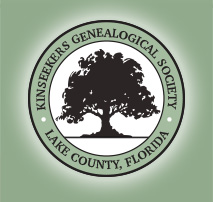We had a great discussion on researching the communities in which our Ancestors lived.
These books were mentioned during the December session:
- The Color of Law: A Forgotten History of How Government Segregated America by Richard Rothstein
(See this website for a visual example of this subject.)
- Light in the Darkness: African Americans and the YMCA, 1852-1946 by Nina Mjagkij
- Pittsburgh and the Urban League Movement by Joe William Trotter Jr
- A Religious History of the American GI in World War II by G. Kurt Piehler
- Railroads in the African American Experience by Theodore Kornweibel Jr
- States' Laws on Race and Color by Pauli Murray
Below are question prompts related to this topic. ( You can find Taneya's, KB's, and Adrienne's webinars and handouts are in the Members Area of our website.)
For Taneya Koonce's presentation on general resources for researching Black family history from 1900-1950:
- What specific newspapers, FAN publications, or digitized records did you explore related to your ancestor's community? What insights did you gain?
- Have you been able to identify any churches, schools, businesses, or organizations your ancestors were affiliated with in their community?
- How did this impact your research? What new strategies did you try for searching and analyzing census records to learn more about your ancestor's community
Example of potential responses:
- Example: "I explored digital newspaper archives like the Chicago Defender and found articles naming my ancestor Mac Thompson as an active member of the local NAACP chapter organizing voter registration drives in 1940."
- Possible case study: "Researching school yearbooks for the Lincoln Academy in my ancestor's hometown revealed photographs and lists of teachers, students, and activities she may have been involved with.”
For KB Barcomb's presentation on researching Black WWII veterans:
- What draft cards, enlistments, pension files, or military records were you able to locate to provide service details on your WWII ancestor?
- Were you able to identify any specific units, battles, camps, hospitals, ships, etc. your ancestor was associated with during WWII? How did this inform your searches?
- What key dates or service details did you uncover?
- Have military records provided any previously unknown locations or communities your WWII ancestor lived in or traveled to? - Were you able to make progress on your ancestor's military timeline?
Example of potential responses:
- Example: "I located my grandfather's WWII draft card showing he registered in 1943 in Mobile, Alabama before being drafted into the army."
- Possible case study: "Using my ancestor's Army serial number (from the NARA AAD database), I was able to request his full military records and trace his units, promotions, locations during WWII service in Europe.”
For Adrienne's presentation on Black women:- Example: "Searching a museum's photo archives, I found portraits of the nursing school graduation for the class my great-aunt was part of in 1925."
- Possible case study: "I read through a history of the local missionary society and found my 3rd-great grandmother listed as a founding member which provided clues about her community leadership."
For Adrienne Whaley's presentation on researching Black women from 1900-1950:
- What specific resources recommended, like newspapers or organizational records, helped you learn more about the life and role of your female ancestor?
- How did investigating churches, clubs, sororities, businesses, or activisim groups your ancestor participated in provide community insights?
- Were you able to identify any previously unknown community roles, relationships, or activities for your female ancestor?
- Did any recommended context sources help you better understand the conditions your female ancestor faced within her community?
Example of potential responses:
Example: "Searching a museum's photo archives, I found portraits of the nursing school graduation for the class my great-aunt was part of in 1925."
Possible case study: "I read through a history of the local missionary scoiety and found my 3rd great grandmother listed as a founding member which provided clues about her community leadership"
Here are some additional example responses that could illustrate the community research discussion questions:
- “I was able to locate my ancestor Ida Brown in the 1940 census by searching for her husband's distinct surname, which also showed her living in the same neighborhood as multiple extended family members."
- "Using Google Maps, I was able to overlay a historical map of Chicago from the 1920s over a current map to see exactly where my ancestor's address was located relative to prominent black businesses and landmarks.”
- "In an oral history interview I found, my ancestor's childhood friend recalled the Baptist church they attended together, which gave me a lead to search for records.“
- "Deeds and land records showed my ancestor Joseph Lee purchased his first house in the Hill District of Pittsburgh in 1932, just a few doors down from his parents.“
- "While researching my ancestor's husband in Works Progress Administration records, I discovered my 3rd-great-grandmother Rosa Wilson also worked for the WPA in the 1930s in Richmond.“
- "A 1944 article in the Chicago Defender mentioned 'Miss Geraldine Johnson' as a recent graduate of Howard University, allowing me to learn my grandmother's maiden name."
- "Using my ancestor's relatively uncommon surname, I was able to identify clusters of extended cousins living nearby in the 1920 census.”

